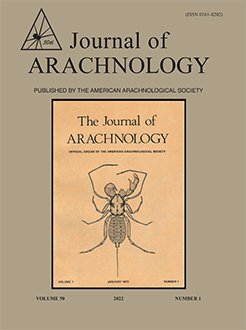According to a recent global literature survey, a total of 39 out of the 129 known spider families (∼30%) contain species capable of capturing vertebrate prey. The finding that the percentage of spider families engaged in vertebrate predation is so high is novel. Two groups of vertebrate-eating spiders are distinguished: “habitual vertebrate-eaters” vs. “occasional vertebrate-eaters”. The habitual vertebrate-eaters comprise ten spider families (Araneidae, Atracidae, Ctenidae, Lycosidae, Nephilidae, Pisauridae, Theraphosidae, Theridiidae, Trechaleidae, and Sparassidae) to which can be attributed 91% of all reported vertebrate predation incidents. The habitual vertebrate-eaters have evolved prey-capture adaptations such as (1) sufficient physical strength coupled with large body size, (2) the use of potent venoms, and (3) the use of highly efficient prey-catching webs. By contrast, unexpected feeding on vertebrates by the occasional vertebrate-eaters (i.e., Actinopodidae, Agelenidae, Amaurobiidae, Anyphaenidae, Barychelidae, Clubionidae, Corinnidae, Ctenizidae, Cyrtaucheniidae, Deinopidae, Desidae, Dipluridae, Eresidae, Filistatidae, Gnaphosidae, Haplonoproctidae, Linyphiidae, Liocranidae, Miturgidae, Oxyopidae, Pholcidae, Porrhothelidae, Salticidae, Selenopidae, Sicariidae, Sparassidae, Tetragnathidae, and Thomisidae) might be considered as chance events that took place when a tiny vertebrate crossed the path of an opportunistic spider. For a few families (e.g., Idiopidae) their status as habitual or occasional vertebrate predators is still unclear. In conclusion, our survey unveiled a large number of spider taxa previously not anticipated to feed on vertebrate prey. These findings improve our general understanding of spider feeding ecology and provide a first assessment of the significance of vertebrate prey as a food source for spiders.
How to translate text using browser tools
10 August 2022
Spiders feeding on vertebrates is more common and widespread than previously thought, geographically and taxonomically
Martin Nyffeler,
J. Whitfield Gibbons

The Journal of Arachnology
Vol. 50 • No. 2
August 2022
Vol. 50 • No. 2
August 2022
Araneae
physical strength
predator diversity
prey-capture adaptations
silk tensile strength
toxins
vertebrate prey




